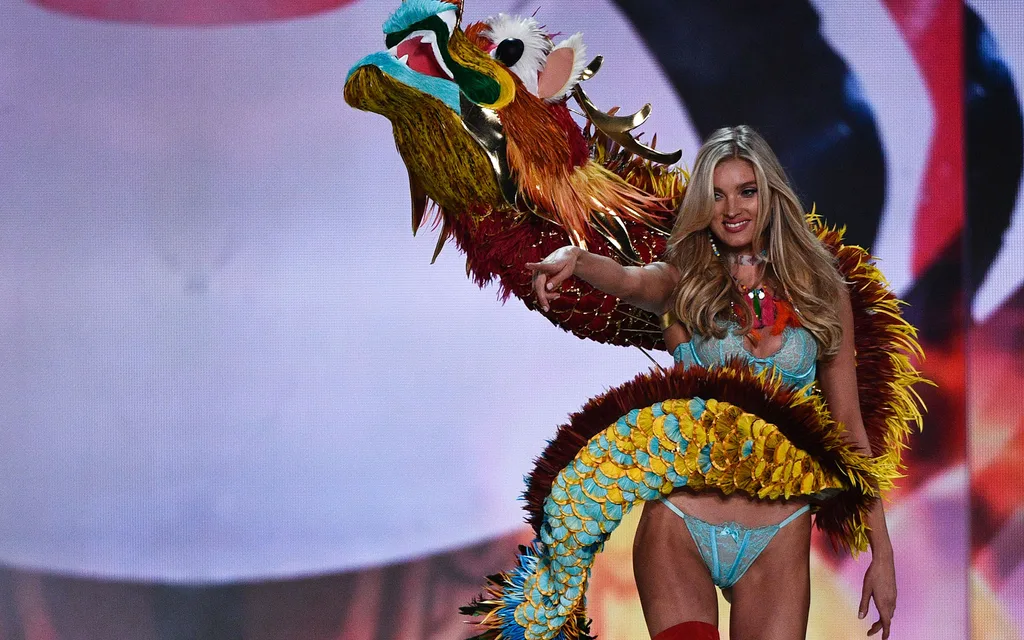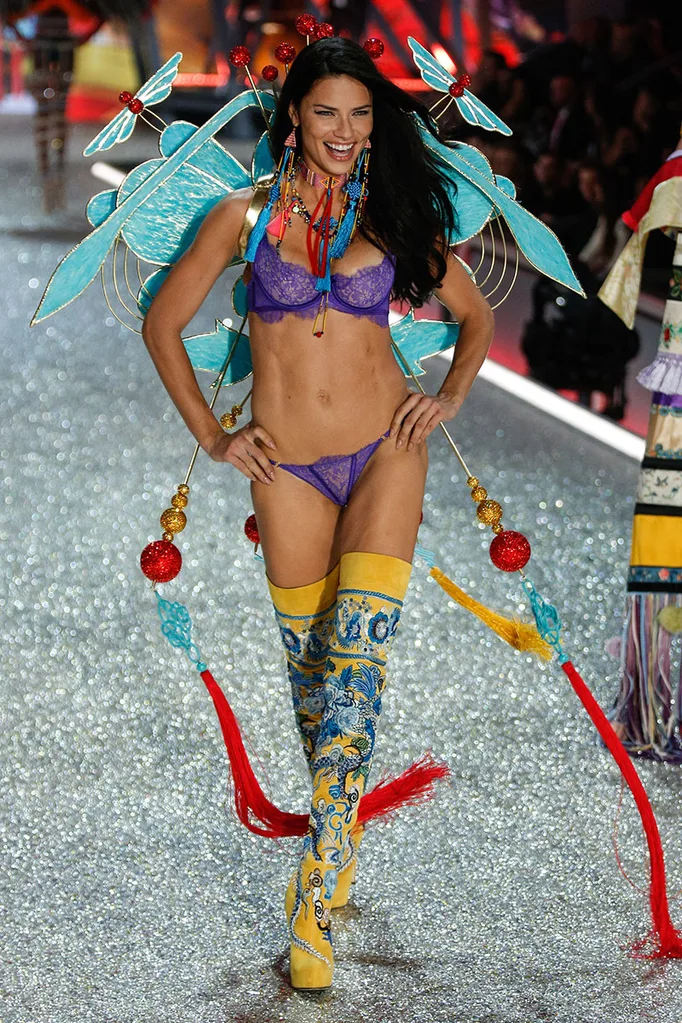Victoria’s Secret has just wrapped filming its 2017 show and while most might be looking at the model’s bodies (wow!) – some are actually interested the clothes (?) they wore.
Once again some are accusing the lingerie giant of making money on the back of extreme cultural appropriation.
Helin Jung penned a piece for Cosmo called ‘Why Can’t Victoria’s Secret Stop Designing Racist Lingerie?’ where she said VS should “stick to thongs that don’t have cultural references.”

Getty.

Getty.
Basically the article says that the models dressed in outfits representing Chinese culture – i.e. the big dragon around Martha Hunt’s neck, the embroidered stiletto boots on Adriana Lima or the tasselled jewels draped on the angels – are a vain attempt to connect with the emerging Asian consumer. But the garments fall into the “appropriation” category because the company has no real intent of starting a meaningful conversation – just gaining new customers.
Of the “Orientalisim” on the VS catwalk Jung wrote:
There’s a lot of talk of China as a dominant world power of the 21st century, and the U.S. government, Hollywood, and now Victoria’s Secret, it seems, are pivoting to face a new reality. But the Orientalism on display here doesn’t show an understanding or an attempt at dialogue. It doesn’t close any gaps. What condescension, for Victoria’s Secret to think that by wrapping a model in a dragon, it could connect directly with a new consumer in China.
Jung has found some support with some who share her opinion…
But many have come to the company’s defence.
As Jung acknowledged, much of the feathered and tasselled jewellery on display was from Nepalese designer Arpana Rayamajhi – who talked about her cultural connection to the pieces she created for the show.
Rayamajhi said the beads and tassels were “a huge part of my culture.”
Of her style, and touching on the issue of appropriation Rayamajhi told Vogue in 2015 :
Ethnic women in Nepal look so incredibly ornate, I can’t help but be influenced in every possible way. Each ethnic group in Nepal is distinctly different from one another and we all look original. It’s also a dying culture now that more and more people are adopting Indian saris or a more modern, Western wardrobe—which in their own way are very beautiful, too. That phenomenon is happening around the world and it seems unstoppable, but it makes me so sad to see that spirit of identity and adornment take a very homogenous form. So I wear a lot of things that are very specific to certain cultures because there are so many beautiful things the world has to offer.
On another level, there was racial diversity among the models themselves (not size – but that’s another issue for another time) including four Chinese models, Liu Wen, Xi Mengyao, Sui He, and Ju Xiaowen – does that matter? We’re not sure.
The fact is, this is not the first time Victoria’s Secret has been called out for causing cultural offence. The brand had to infamously apologise for putting a Native American headdress on lingerie-clad model Karlie Kloss in 2012 – a styling stunt that was criticised as an exhibition of ignorance toward tribal culture and history.
Given the past, maybe the “Orientalisim” in this year’s show tugged at the sensitivities of many who wish VS would stick to designing lingerie without borrowing from cultures they make no deeper effort to connect with.
But racism intersecting with fashion, accidental, ignorant or otherwise, is nothing new. As Rayamajhi hinted, the trend of cultural borrowing may be “unstoppable”. So do we need to hold our horses and assess things case by case before we scream appropriation?
Moral of the story could be, even if it seems benign to you, delicately acknowledging someone else’s offence on the basis of race, or any other topic that requires you to acknowledge tiers of privilege, is important. But one might argue that the acknowledgement of intent is also crucial.
Either way, it’s a conversation we need to have again and again so the the lines of appreciation vs appropriation become clearer.
What do you think – did Victoria’s Secret cross a line?










